Some people planning a trip to Kyoto may also be considering a visit to its former red-light districts.
In this article, we’ll take a closer look at Kyoto’s so-called “Akasen” areas.
We’ll also highlight how the system works, along with introducing some of Kyoto’s representative adult entertainment districts.
If you’d like to enjoy Kyoto’s nightlife as well as its sightseeing spots, be sure to read through to the end.
- What is the history of Kyoto’s red-light (Akasen) districts?
- Where is the red light district in Kyoto?
- What was the system of Kyoto’s red-light districts?
- Even after the full enforcement of the Anti-Prostitution Law led to the abolition of the red-light districts, prostitution continued.
- Kyoto’s remaining red-light (Akasen) districts effectively disappeared following a crackdown in 2010.
- Kyoto’s major adult entertainment districts
- Kyoto’s Adult Entertainment: Types and Available Services
- If you are looking for full-service sex, we recommend going to Ogoto in Shiga Prefecture.
- Conclusion
What is the history of Kyoto’s red-light (Akasen) districts?
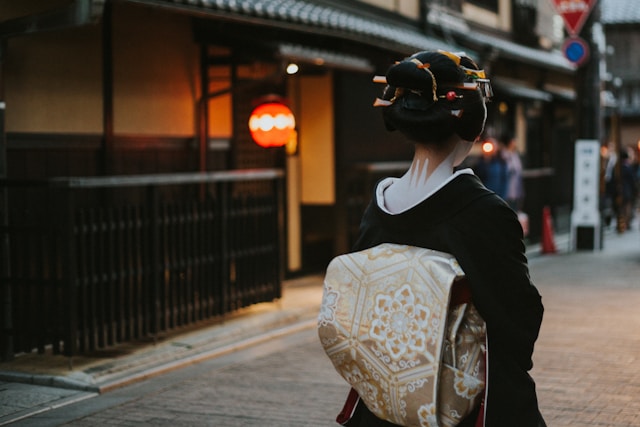
When people refer to Kyoto’s “Akasen” (red-line) districts, they are mainly talking about Gojō Rakuen.
Located in the southeastern area of Kawaramachi-Gojō in Shimogyō Ward, Kyoto City, it was formerly a licensed pleasure quarter, which came to be called a red-line district after the war.
Unfortunately, as of 2025, Kyoto’s Akasen districts have disappeared.
In prewar Japan, prostitution was legally permitted, but in 1946, the GHQ (General Headquarters) ordered its abolition.
However, even after that, prostitution continued under government regulation for a time.

At the same time, there were also areas known as “Aosen” (blue-line districts), where prostitution was conducted illegally without government permission.
Where is the red light district in Kyoto?
It is located in the Shimogyo Ward area of Kyoto City, covering the vicinity of the Kamo River, Shomen Street, Gojo Street, and Kawaramachi Street.
“Gojo Rakuen” is situated very close to the Gojo Ohashi Bridge, extending south of the bridge along the Takase River.
Individual establishments were scattered across the sandbank area between the Kamo River and the Takase River.
The nearest station is Kiyomizu-Gojo Station on the Kyoto Main Line, located about a five-minute walk away.
What was the system of Kyoto’s red-light districts?
Here is how the system worked in Kyoto’s red-light (Akasen) districts:
- Choose a woman
- Enter the establishment and pay a fee known as hanadai (literally “flower fee”) to the shop
- Go to the designated room
- A woman dressed in a kimono (styles varied depending on the establishment) would appear
- You would then give her an additional payment
- Receive the service in a private room
Prices varied depending on the establishment and the era, but records indicate that clients typically paid the shop around 4,000 yen for 40 minutes or 6,000 yen for 60 minutes.
Separately, the woman herself would receive an additional payment of around 20,000 to 30,000 yen.

Akasen services were basically designed for short-term use, and it seems that very few customers chose longer courses lasting two or three hours.
Even after the full enforcement of the Anti-Prostitution Law led to the abolition of the red-light districts, prostitution continued.
The end eventually came for Kyoto’s Akasen districts as well.
In 1958, Japan fully enforced the Anti-Prostitution Law, which rendered the red-light districts unofficial and illegal.
After the enforcement of this law, prostitutes disappeared from Kyoto’s Akasen areas, which officially transitioned into hanamachi districts, where geiko (geisha) and maiko operated.
However, even after the abolition of the red-light districts, prostitution continued on a small scale.
Although it was prohibited by law, a grace period was granted for abolishing the brothels and transitioning to hanamachi, so prostitution was allowed to continue semi-officially during that time.
Kyoto’s remaining red-light (Akasen) districts effectively disappeared following a crackdown in 2010.
Although Kyoto’s red-light (Akasen) districts had survived even after the enforcement of the Anti-Prostitution Law, they eventually came to an end.
In October 2010, police began an investigation into Gojo Rakuen, which until then had been largely tolerated.
As a result, five owners and managers were arrested.
Following this, in March 2011, Gojo Rakuen, the last remaining Akasen district in Kyoto, was formally dissolved and dismantled, and the lanterns and signboards displayed at the establishments were removed.
Even today, buildings from the red-light era still remain.
Structures that were likely once brothels are scattered throughout the area, preserving many traces of the Akasen period.

There are also many traditional Japanese houses that resemble cultural heritage properties, so quite a few tourists visit the area as part of their sightseeing.
Kyoto’s major adult entertainment districts
Currently, Kyoto’s red-light (Akasen) districts have disappeared, so if you are looking for adult entertainment, you will need to use other types of establishments.
Therefore, in this section, we will introduce some of Kyoto’s major adult entertainment districts.
We will also explain the unique features of each area, so please use this as a reference.
Fushimi / Kyoto Minami Interchange area
The Fushimi and Kyoto Minami Interchange area is located next to an office district, making it a popular spot for many businessmen.
Because the interchange is nearby, there are also many love hotels in the surrounding area.
In this region, so-called hotel health and delivery health services — types of dispatch-style adult entertainment — are particularly common.
The usual process is to check information about the shop online and then call to have a girl dispatched to you.
The nearest station to the love hotels around the Kyoto Minami Interchange is Takeda Station on the Kyoto Municipal Subway, which is about a 6- to 8-minute walk away.
Kawaramachi and Kiyamachi
Kawaramachi and Kiyamachi are among Kyoto’s most prominent downtown entertainment districts, stretching from the area around Hankyu Kyoto Kawaramachi Station to the vicinity of Sanjo Ohashi Bridge.
The area is also popular among tourists, thanks to its proximity to attractions such as Gion and the Rojisuizokukan (alley aquarium).
Along Nishi-Ishigaki Street and Nishi-Kiyamachi Street, there are a number of “fashion health” shops, a type of storefront-based adult entertainment service.
Since these are store-based services, there is generally no need to pay separate location fees.
These shops tend to offer relatively affordable options.
Because the area also has many business hotels and love hotels, hotel health (dispatch-type services to hotels) and delivery health services are available as well.
There is a wide range of price points, and customers can enjoy various genres, such as large-breasted women, plump women, or married women.
The nearest station is Hankyu Kyoto Kawaramachi Station, which is about a 2-minute walk away.
You can also reach the area by bus from Kyoto Station in approximately 15 minutes.
Gion and Kiyomizu
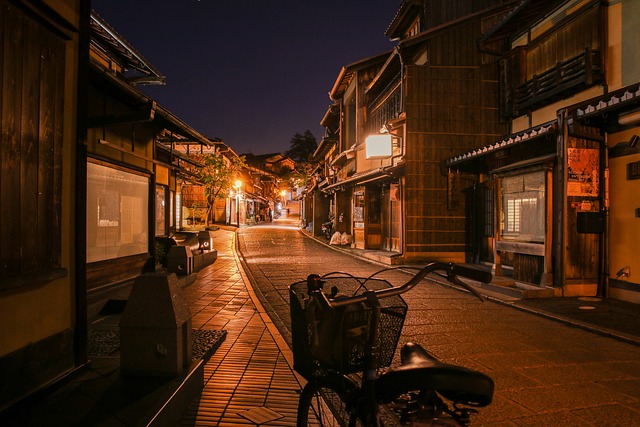
Gion and Kiyomizu are highly popular areas among tourists, thanks to their traditional, atmospheric townscapes.
In these areas, hotel health and delivery health services—types of dispatch-style adult entertainment—are especially common.
Since there are many business hotels and love hotels nearby, it is typical to have a woman dispatched to your accommodation to receive services there.
Because these neighborhoods attract many international tourists, there are also quite a few establishments that explicitly welcome foreign customers.
There is a wide variety of concepts available, including “gal” style, cross-dressing boys, transgender women, married women, and plus-size women, so you can find a shop that suits your personal preferences in Gion or Kiyomizu.
The nearest station to Gion is Hankyu Kyoto Kawaramachi Station, about a 5-minute walk away.
You can also get there by bus from Kyoto Station; take the 100 or 206 bus line and get off at the “Gion” bus stop.
Kyoto’s Adult Entertainment: Types and Available Services
Since Kyoto’s red-light (Akasen) districts have disappeared, if you want to receive erotic services from Japanese women, you should consider using the following types of adult entertainment services:
| Delivery Health (outcall escort services) Hotel Health (dispatch services to hotels) Fashion Health (store-based sex services) erotic massage parlor Pink Salon (oral service bars) |
In this section, we will explain the types of services offered at these establishments in Kyoto, along with a rough estimate of their costs.
delivery health
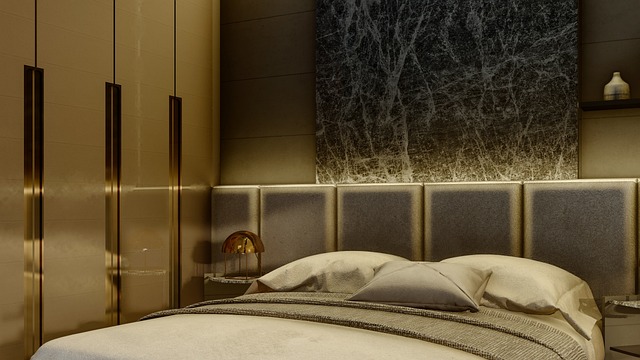
Delivery health is a non-store-based adult entertainment service, where a woman is dispatched to locations such as love hotels, business hotels, or rental rooms.
When using this service, you make a reservation by phone or through the internet.
At the scheduled time, the woman arrives at your chosen location, explains the play details, and you pay the fee.
After that, you typically take a shower before starting the session.
The services are generally divided into “standard play” and “optional play.”
Typical standard services include the following:
kissing、body-to-body licking、hand job、blowjob、69、sumata (non-penetrative intercrural sex) 、foot job etc.
Optional services vary depending on the establishment.
Below, we will list some of the typical optional services available through delivery health.
costume play (cosplay)、female masturbation、electric massager、vibrator、bullet vibrator (rotor)、urination play、anal sex、facial ejaculation (facial) etc.
Each establishment has its own unique concept, and in Kyoto you can find a wide range of options, including “bishoujo” (cute young girls), “amateur” types, lolita style, older-sister types, mature women or housewives, plus-size women, gyaru (gal) style, S (sadistic) types, M (masochistic) types, and large-breasted types.
With such a diverse selection of genres, it is possible to choose a shop that matches your personal preferences and fetishes.
Prices vary depending on the shop’s concept and overall grade, with both budget and high-end options available.
Generally speaking, shops featuring younger women tend to be priced higher, while those with older women tend to have lower prices.
hotel health
Hotel health, like delivery health, is a non-store-based type of adult entertainment service.
The services provided are essentially the same as delivery health, but the process for using them is slightly different.
In the case of hotel health, there is usually a reception office where you first check in. After completing the check-in process, the service is provided at a love hotel or business hotel.
At the reception, you typically choose a sex worker and select your course, then pay the fee on the spot.
Instead of having the woman dispatched directly to your hotel room, it is also common to meet her somewhere in town and then go to the hotel together.
There are usually staff members at the reception, so you can ask detailed questions about the services.
Some reception offices also have staff who speak foreign languages, so if you have concerns, it may be a good idea to consult them at reception.
Hotel health reception offices are generally located in areas where love hotels are concentrated.
Some shops also have reception offices near major tourist attractions such as Gion, Yasaka Shrine, or Arashiyama.
fashion health
Fashion health is a store-based type of adult entertainment service.
The services offered are essentially the same as those of delivery health and hotel health.
One of its main features is that there is a dedicated service area within the shop itself, so there is no need to pay separate location fees.
The typical process involves visiting the shop, choosing a sex worker and a course, and then deciding whether to add any optional services. After making these selections, you pay the fee.
Once the sex worker and the playroom are ready, you will be called into a private room, where the service begins.
In Japan, strict regulations have been imposed on the opening of new store-based sex establishments, leading to a decline in their overall number.
In Kyoto as well, areas with fashion health shops are limited, so it is a good idea to research in advance before deciding where to go.
Below is a list of areas in Kyoto where you can find fashion health establishments:
- Kawaramachi and Shijo
- Kiyamachi
- Gion
All of these fashion health shops are conveniently located near train stations.
erotic massage parlor
Fuzoku esthe (erotic massage parlors) are adult entertainment services that offer not only aroma and lymphatic massages but also sensual massages and hand jobs.
Unlike delivery health or hotel health services, they do not provide contact-based sexual services such as oral sex or sumata (non-penetrative intercrural sex involving mucous membrane contact).
At a fuzoku esthe, the session usually begins with an aroma or lymphatic massage.
Using aromatic oils, the masseuse gently loosens up your entire body.
During the treatment, there are also erotic elements, such as close physical contact.
The session typically finishes with a hand job.
In most fuzoku esthe shops, the following activities are generally prohibited:
complete nudity、touching、inserting fingers、blow job、69、sumata (non-penetrative intercrural sex) etc.
The prohibited activities may vary depending on the shop or the course, so if you are concerned about what is not allowed, be sure to check with the shop in advance.

Please note that engaging in prohibited acts may result in a fine or penalty.
In Kyoto, there are both store-based and dispatch-type erotic massage parlors.
They offer a wide variety of genres, including cute young-girl types, amateur types, married women, and mature women.
pink salon
A pink salon is a type of adult entertainment establishment with an interior similar to a café, where you can receive hand or oral services.
It is a store-based business, so there are no separate location fees.
In Kyoto, there are only a small number of pink salons, with around two or three confirmed as of 2025.
The services you can receive may vary slightly depending on the shop or the woman.
The typical process begins with selecting a woman and a course (length of time) at reception.
Some pink salons offer a system called hanabira kaiten (“flower-petal rotation”), where multiple women take turns serving you.
Once everything is ready, you will be shown to your seat and wait for the woman to arrive.
When she arrives, services such as kissing and oral sex will begin.
The standard services available at a pink salon generally include the following:
hand job、blow job、breast fondling、kissing、cum in mouth etc.
Although not all sex workers offer these services, here are some examples that may be available depending on the individual provider.
69、fingering、swallowing (gokkun)、tit fuck etc.
Before starting the session, it is common for pink salons to serve tea or soft drinks.
Since pink salons are generally located in entertainment districts, many tourists visit them after enjoying drinks or a meal.
Prices are relatively low compared to other adult entertainment services, with most sessions costing under 10,000 yen.
If you are looking for full-service sex, we recommend going to Ogoto in Shiga Prefecture.
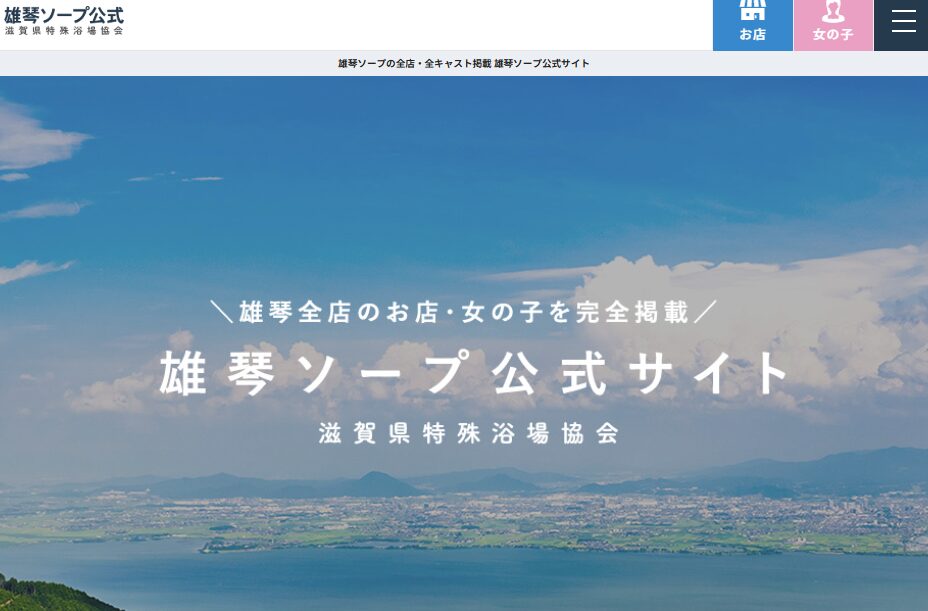
引用:official Ogoto SoapLand site
In Kyoto, there are no soaplands—adult establishments where sexual intercourse is provided—in addition to there being no remaining red-light districts.
Therefore, if you are looking to have sex, you will need to visit somewhere outside of Kyoto.
One recommended destination is Ogoto, located in neighboring Shiga Prefecture.
Ogoto is a well-known adult leisure spot, home to a large number of soaplands.
It is visited not only by locals but also by many tourists, and there are nearly 30 soaplands in the area.
Each soapland has its own unique concept, including “older sister” types, married women, cosplay themes, and even chikan (molestation play) styles.
There is a wide range of options, from budget-friendly soaplands with total costs under 20,000 yen, to luxury soaplands costing over 50,000 yen.
You can easily reach Ogoto from JR Kyoto Station by train.
- JR Kosei Line (bound for Omi-Maiko): Hieizan-Sakamoto Station (about 18 minutes)
- JR Kosei Line (bound for Omi-Maiko): Ogoto Onsen Station (about 21 minutes)
- Keihan Ishiyama-Sakamoto Line: Sakamoto-Hieizan-guchi Station (about 30 minutes)
There are shuttle services available from each station to the soapland district in Ogoto.
If you plan to go by train, be sure to inform the shop in advance so they can arrange to pick you up.
Conclusion
We have introduced the current state and system of Kyoto’s former red-light (Akasen) districts.
Kyoto’s red-light areas have already disappeared, with only the historical buildings remaining to remind us of that era.
The Akasen system involved choosing a woman, paying both the establishment and the woman, and then having sex.
Short-term courses were the norm, with services typically ending within 60 minutes.
Since Kyoto no longer has red-light districts, if you want to enjoy adult entertainment, you will need to use other types of sex-related services.
Kyoto offers options such as delivery health, hotel health, fashion health, erotic massage parlors, and pink salons.
Because the services vary depending on the type of establishment, it is recommended to choose one based on your preferences.
If you are specifically looking to have sex, we recommend visiting Ogoto in neighboring Shiga Prefecture.
Ogoto is one of Japan’s most famous soapland districts, and you can reach the nearest station from JR Kyoto Station in about 30 minutes.
There are many attractive establishments there, so it may be worth considering.
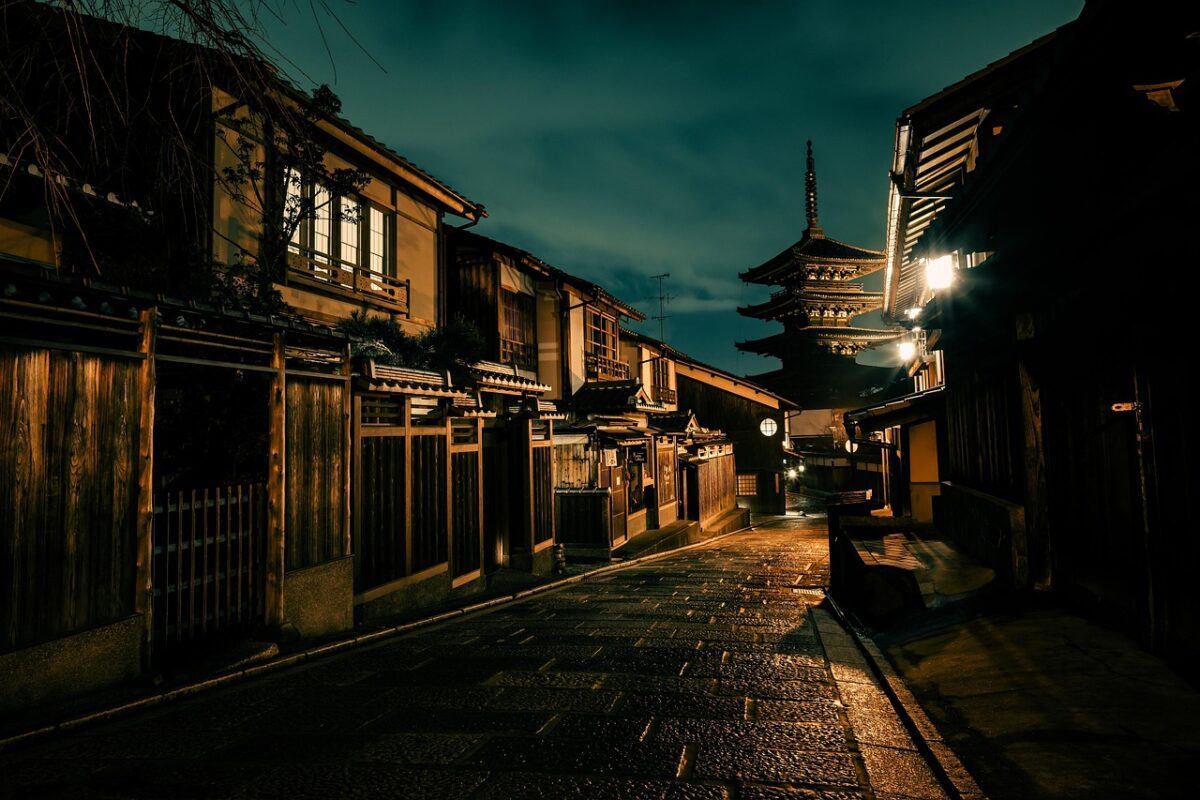



コメント